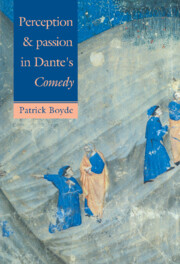Book contents
- Frontmatter
- Contents
- Preface
- PART ONE Coming to terms with Aristotle
- PART TWO The operations of the sensitive soul in man
- 5 Perception of light and colour
- 6 Perception of shape, size, number movement, and stillness
- 7 Imagining and dreaming
- 8 Body-language and the physiology of passion
- PART THREE The operations of the rational soul
- PART FOUR Combined operations
- Notes
- Select bibliography
- Index of Latin terms
- Index of longer quotations
- General index
5 - Perception of light and colour
Published online by Cambridge University Press: 14 October 2009
- Frontmatter
- Contents
- Preface
- PART ONE Coming to terms with Aristotle
- PART TWO The operations of the sensitive soul in man
- 5 Perception of light and colour
- 6 Perception of shape, size, number movement, and stillness
- 7 Imagining and dreaming
- 8 Body-language and the physiology of passion
- PART THREE The operations of the rational soul
- PART FOUR Combined operations
- Notes
- Select bibliography
- Index of Latin terms
- Index of longer quotations
- General index
Summary
The pre-eminence of vision and the ‘proper visibles’
All the external senses exist in order to detect bodies in the world outside the percipient, to register their movements and to discriminate between them. They are, however, unequal in their performance. The three senses illustrated in the fable of the wolf and the lamb are superior to those of touch and taste because they enable animals to distinguish between bona and mala while they are still at a distance, and then to ‘move themselves’ in accordance with their ‘estimation’. And sight has always been regarded as the highest and most perfect of the senses, if only because it affords the finest discriminations at the greatest distance.
Aquinas noted that, in ordinary speech, ‘to see’ had become the verb of sensation par excellence (‘see how hot it is’), and that it was also commonly extended to the act of understanding (‘do you see what I mean?’). And anyone who studied philosophy in the late thirteenth century would have known the opening paragraph of Aristotle's Metaphysics, where the Philosopher observes that ‘we take pleasure in the senses for their own sake, and above all in the sense of sight, preferring it to all the other senses because it is the principal source of knowledge’.
Dante clearly endorsed this view of the matter whole-heartedly. For him, as poet, no operation of the sensitive component of the human soul was anything like as important as seeing. He took the keenest interest in the contemporary science of optics, using his knowledge on almost every page of the Comedy with amazing variety and virtuosity, so that the most severe restraint has been required to condense the following introductory survey into two longish chapters.
- Type
- Chapter
- Information
- Perception and Passion in Dante's Comedy , pp. 61 - 92Publisher: Cambridge University PressPrint publication year: 1993



